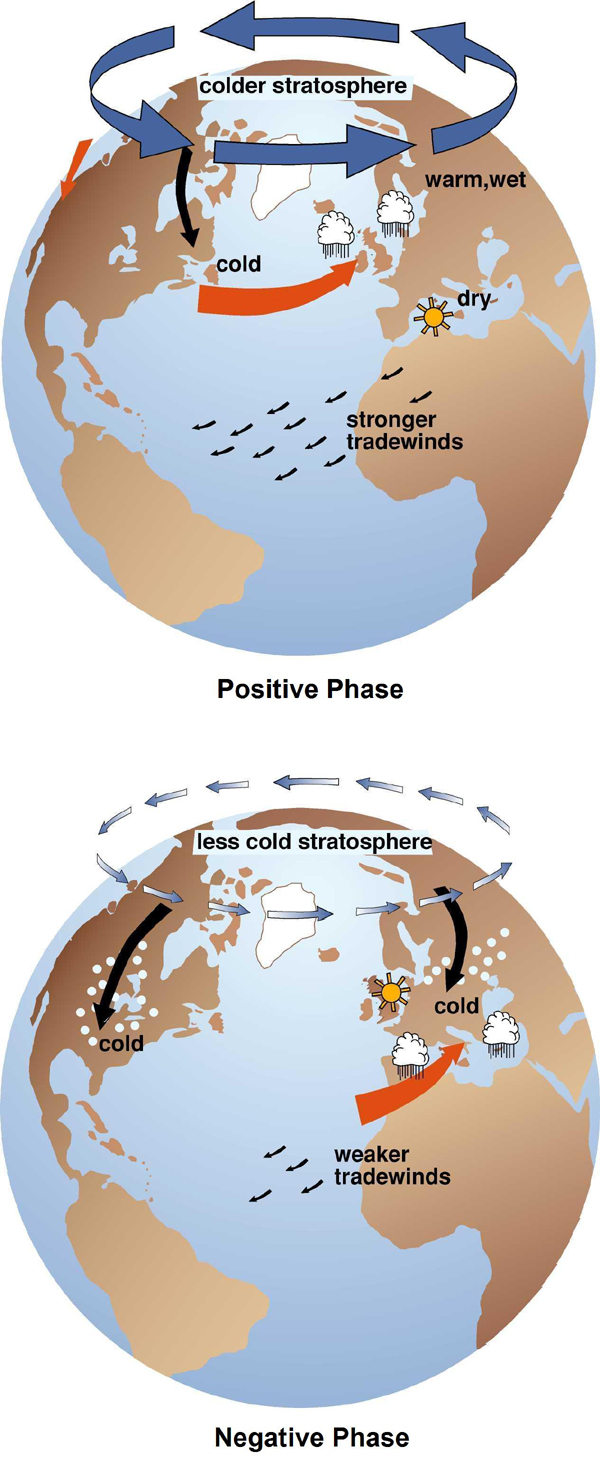Arctic Oscillation AO
Related Topics |
Arctic Oscillation AO |
The Arctic Oscillation (AO) refers to variations in the difference in the atmospheric pressure patterns between northern mid-latitudes (about 45 degrees North) and the Arctic. It is an important Arctic climate index with positive and negative phases representing the state of atmospheric circulation over the Arctic. Low pressure systems usually dominate over the Arctic while high pressure systems sit over the mid-latitudes. In the positive phase of the AO, the pressure difference of the systems is stronger than normal, confining the southward extension of cold Arctic air. In the negative phase, the pressure difference is weaker than normal, allowing easier outbreaks of frigid air to the south. (See the figures below) Latest status of the AO can be found at : Further information of the AO can be found at :
|
